The Grand scheme
This is the downtown that Frank Gehry wanted. When will LA's leaders give it to us?
LA officials keep saying the new bus shelter program is "for the Olympics." What we're installing isn't good enough for a Thursday afternoon

On a hot day last month, I went on a tour of Koreatown bus stops — not a dangerously hot day like yesterday, mind you, just a standard LA summer hot day. I decided that a Metro bus actually isn't the worst place to be when it's 90: I was treated to an arctic blast of AC, a relatively comfortable seat, and even a port to charge my phone (USB-A; I carry the old cord around with me for this very reason). But despite the pretty-okay experience once your bus arrives, the city of Los Angeles has not given transit riders a pleasant place to wait for that bus — even in this high-ridership neighborhood.
As I surveyed K-town for shade, it wasn't surprising to me how few bus stops have shelters — only about a quarter of all LA bus stops do — or how many of the benches and seats were either damaged or in very dire condition. What struck me was how hard it was to find the bus stops themselves. Metro's signage is teeny-tiny. When every stop has different street furniture configurations, it's tough to suss out patterns corner by corner. Even though they're far-between, it's fairly easy to spot the older shelters; they're matte black and aggressively utilitarian, but they stake out the space. The new LA bus shelters are so small, unremarkable, and offensively neutral — is it like sun-bleached on purpose? —that they're virtually invisible. It's completely the opposite of the way we've designed our buses, which pull up in a snazzy California poppy orange you can see 15 blocks away. You'd think we'd want better advertising for our investment — if not for the bus service itself, at least for the actual advertising displayed on the side of the shelters.
Everything was different at the corner of Vermont and Olympic, where ACT-LA, a coalition of transit and housing organizations, had set up a bus stop activation. At this busy intersection it was normally too hot to sit on the sole green metallic bus bench in 90-degree weather — I like to say these benches can leave grill marks on your thighs, and that's not an exaggeration — but ACT-LA staffers had scrambled a half dozen pop-up tents and umbrellas, which, crucially, could be adjusted as needed as the shade slowly crept away.
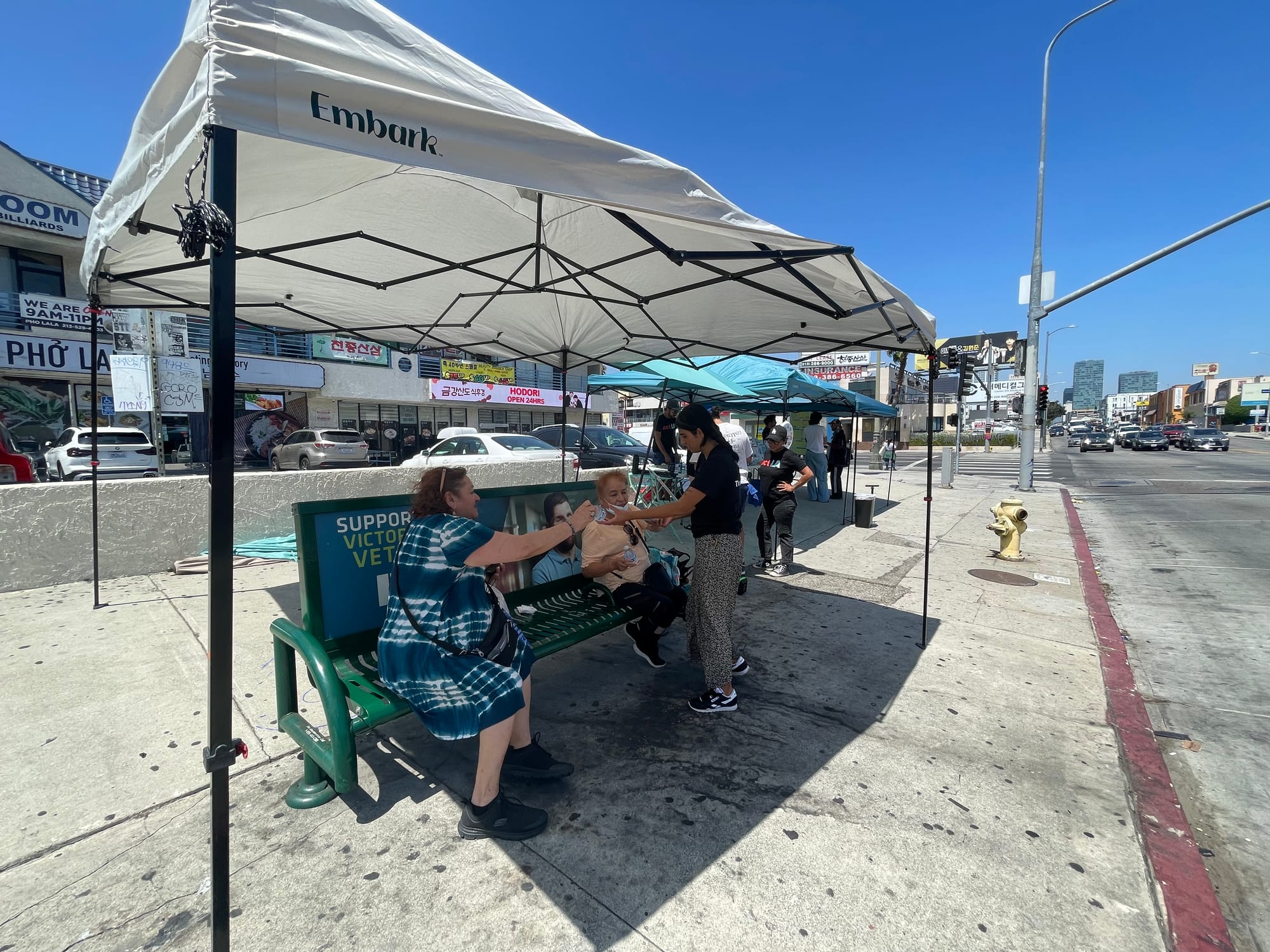
While people waited for their buses, ACT-LA passed out cold water bottles and snacks. There were little service stations set up where you could inflate a bike tire, grab a mask or a covid test, or simply sponge the sweat from your face.
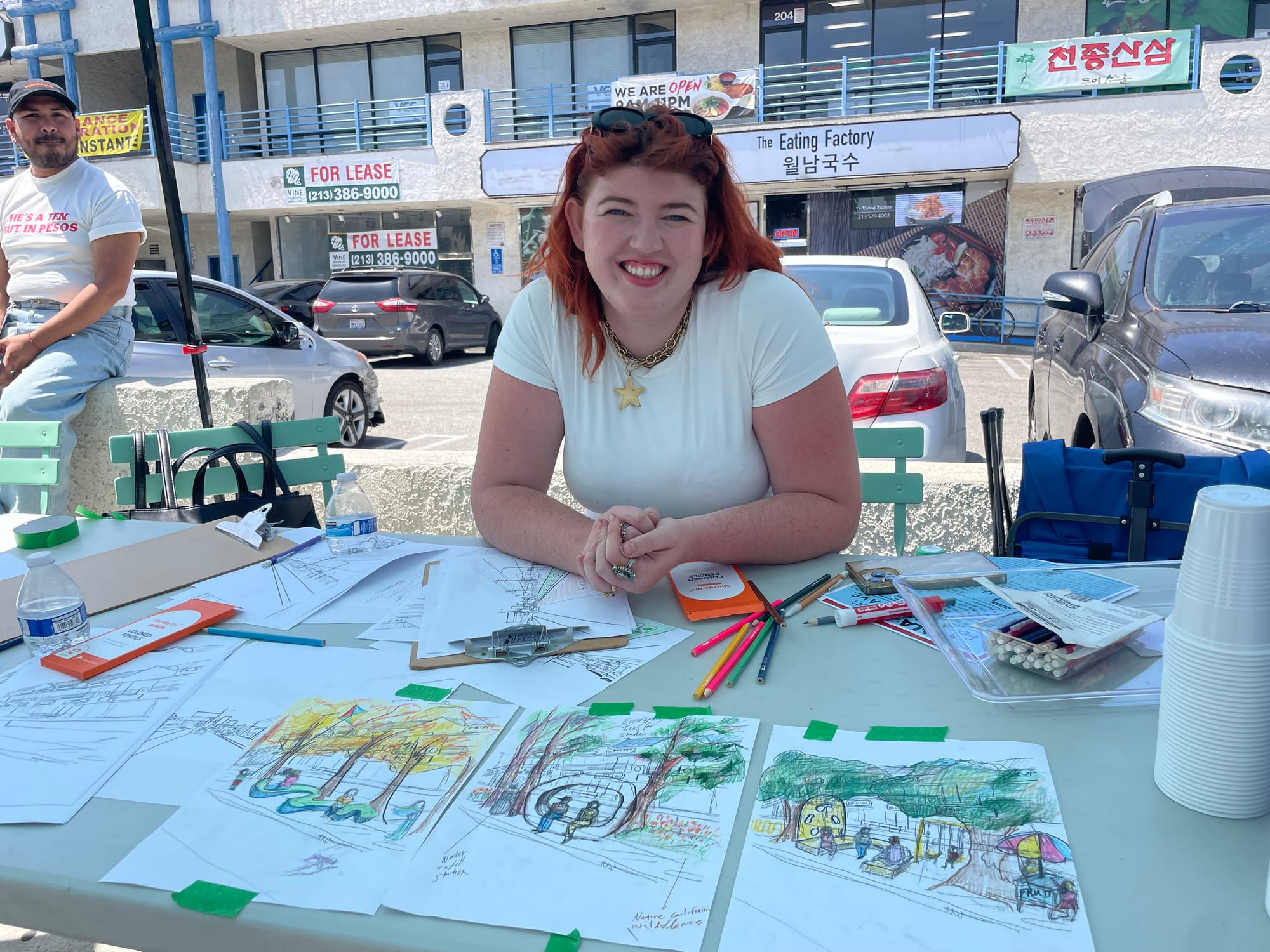
At one table, an artist asked riders "What is your ideal waiting environment?" and quickly drew up sketches based on their descriptions. As someone who often travels with two impatient children, I loved the idea of turning bus stops into mini-playgrounds. There were requests for benches designed for conversation. More food vendors. And many, many visions of mature tree canopies. You can see more of these on Instagram, they're quite beautiful!
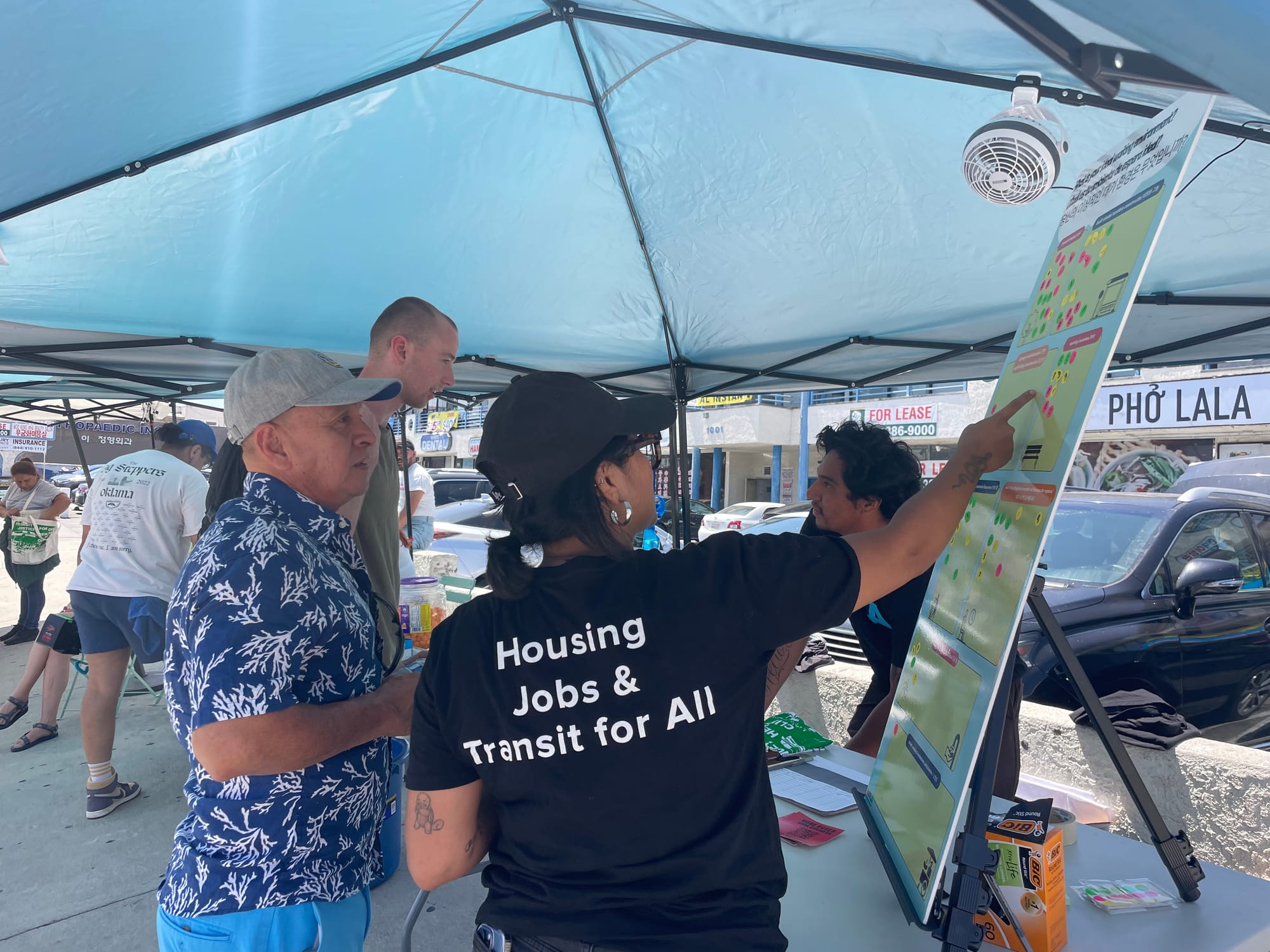
At another table, volunteers asked riders to place three dots, ranked in order of importance, beside the amenities that would most improve their waiting experience. Unsurprisingly, more trees won by far, followed by more built shade.
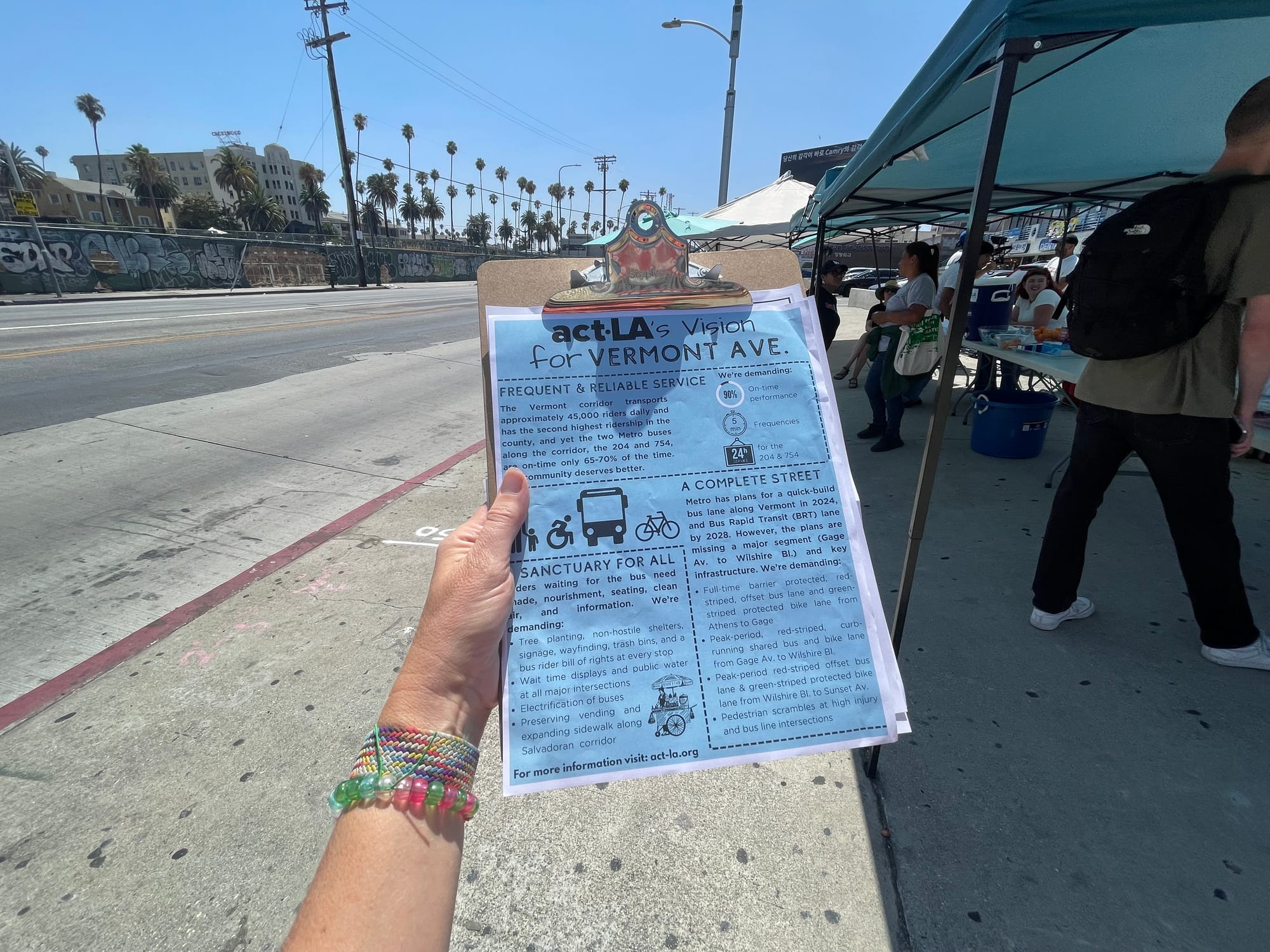
Now how did I have time to do all these things at a bus stop? Because even though Vermont is a "rapid" bus route, the buses show up on schedule only 65 to 70 percent of the time. Metro's got a plan to speed up the buses, with quick-build dedicated lanes going in by next year, and a full bus rapid transit route by 2028. But a better experience requires much more than bus lanes. Which is why the ACT-LA coalition is pushing for more changes including safer crosswalks, protected bike lanes, and major bus stop improvements like water stations and wayfinding. It seems like the least we can do for the bus route with the second-highest ridership in the entire county.
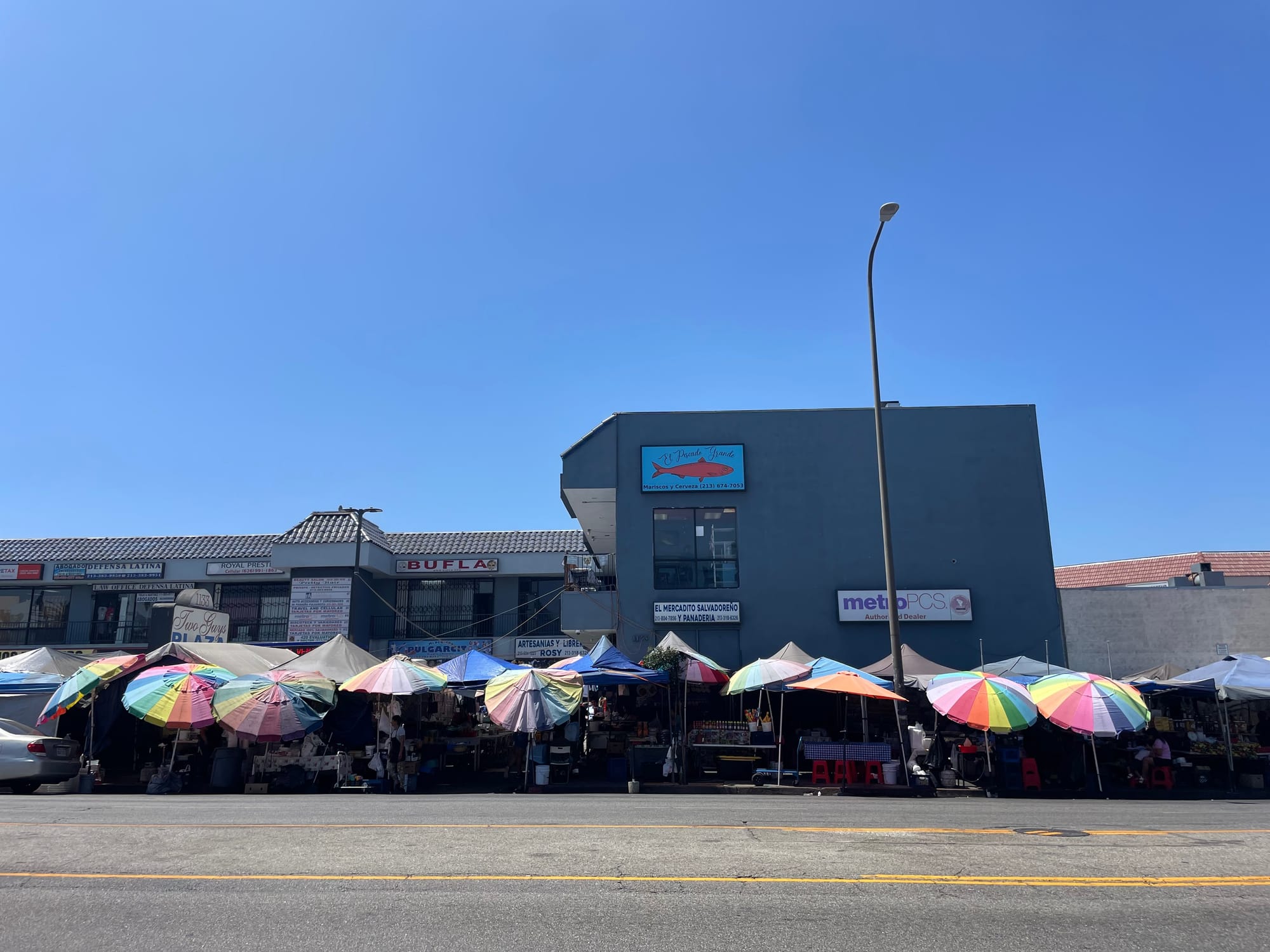
Just down the street from where ACT-LA was set up on Vermont is perhaps the most perfect waiting environment possible: community, food, and near-continuous shade that stretches for blocks. I almost don't want to ruin it for you if you've never been inside, but there is an entire Salvadorian market with full-service pupuserias set up right there on the sidewalk. And to stroll through the space, ducking yucca blossoms hung like chandeliers, with vendors shelling beans and cracking open clams as sunlight filters through rainbow umbrellas, is a moment of pure pedestrian wonderment. This is also unfortunately a sidewalk that has been narrowed due to a very stupid policy known as "spot widening" which the city needs to end. ACT-LA is calling for improved infrastructure for vendors here as part of the bus rapid transit project, including widening the sidewalk throughout this corridor.
With my survey of Vermont stops complete, and a good vision for the future, it was time to head west. On Olympic, of course.
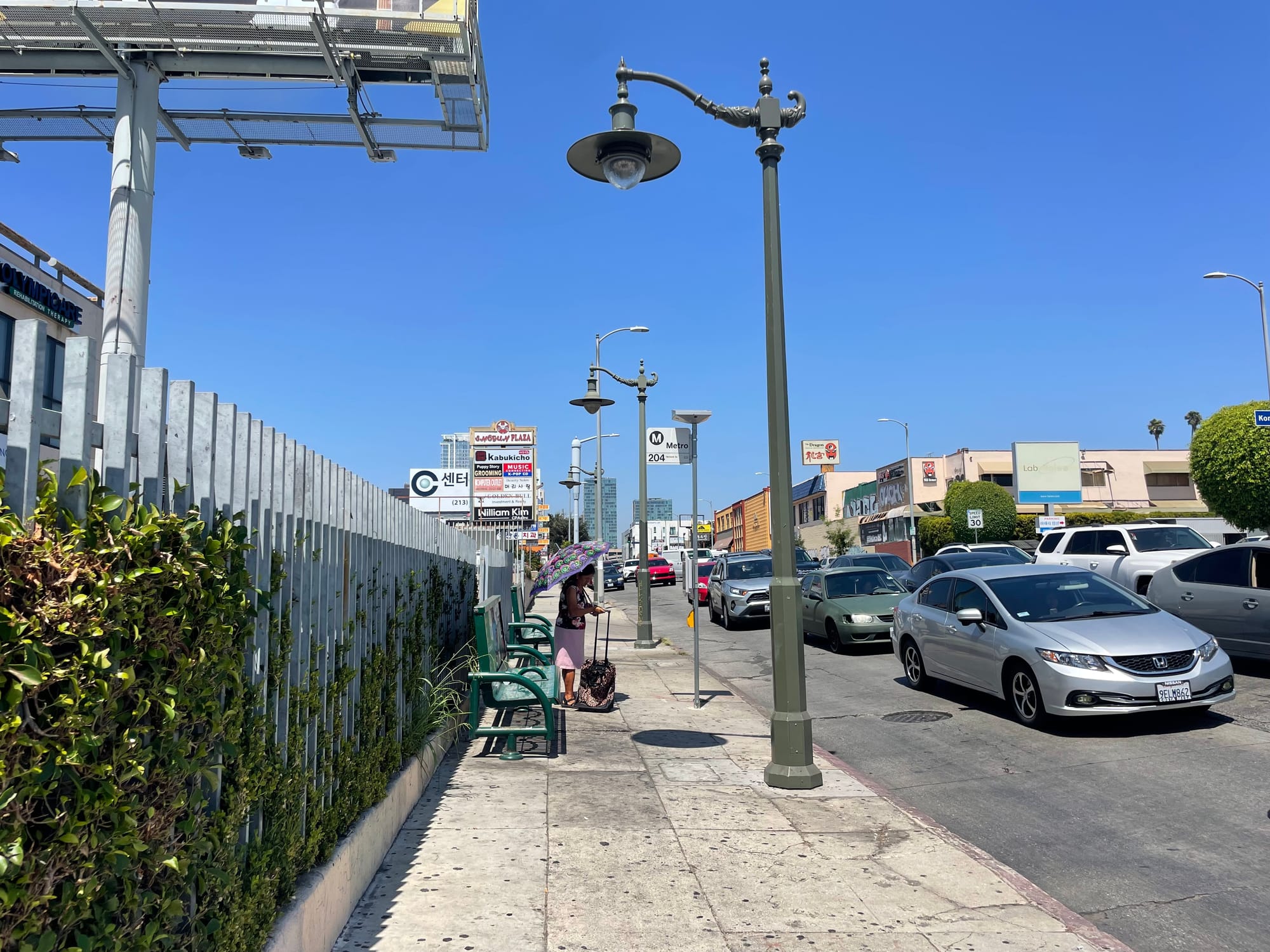
Remember, these are some of the most transit-dependent communities in the whole city. The bus stops are populated with riders carrying giant floral parasols, their handcarts filled with groceries. And this is how we treat the people who are doing the most to make our streets lively and safe. In Koreatown it also seems like much more effort has been expended on installing decorative street lighting programs instead of other amenities like benches and trees. And while extra lighting is very important for transit riders — it's a huge safety issue, especially for women — the city seems to have spent lots of money on just lights (which, honestly, these days might not even work) instead of a multipurpose waiting area that could accomplish many goals at once.
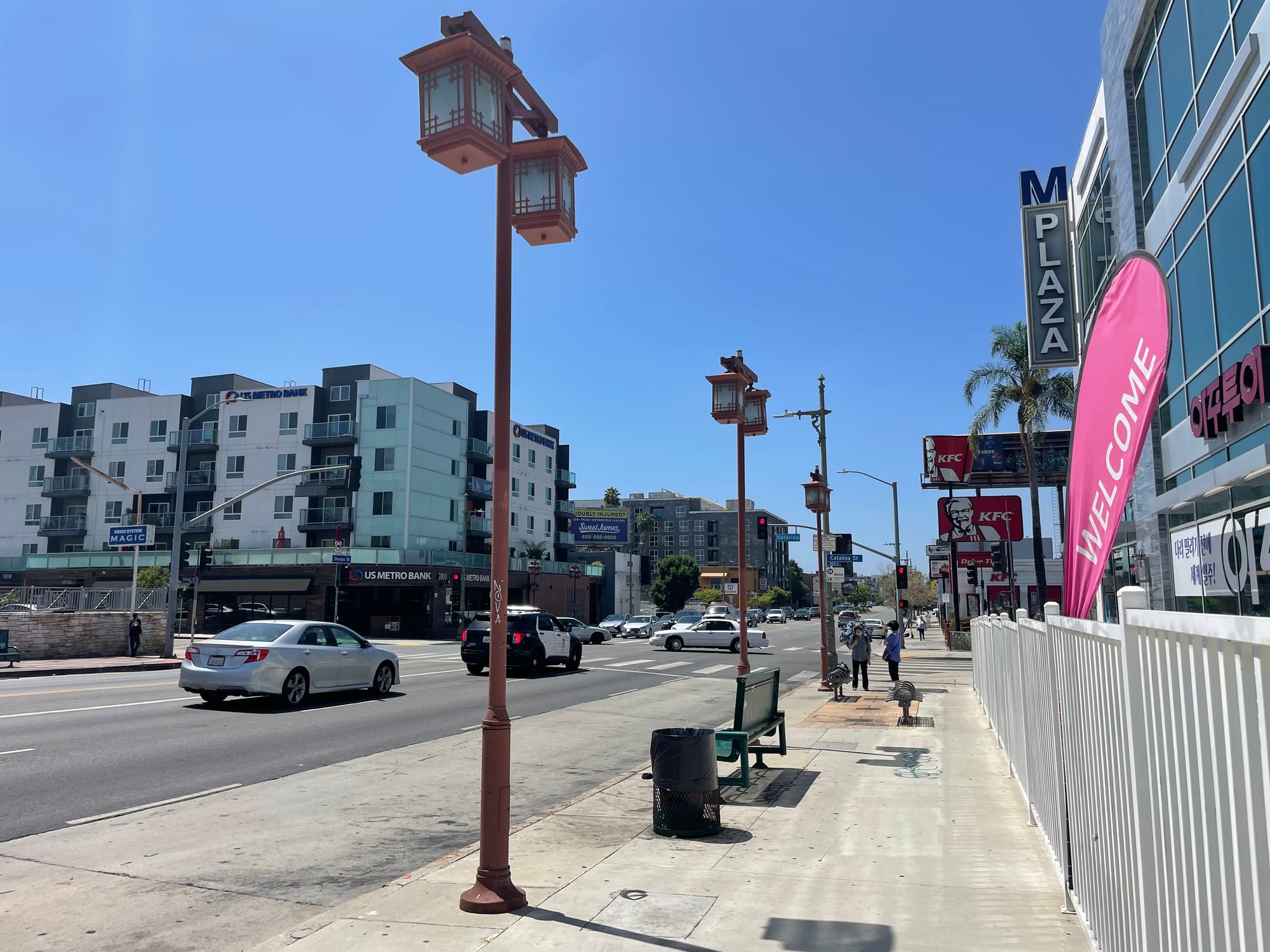
As I was walking along Olympic I couldn't believe how many different types of decorative lighting I encountered, so I started snapping photos of all of them.
And then I looked down.
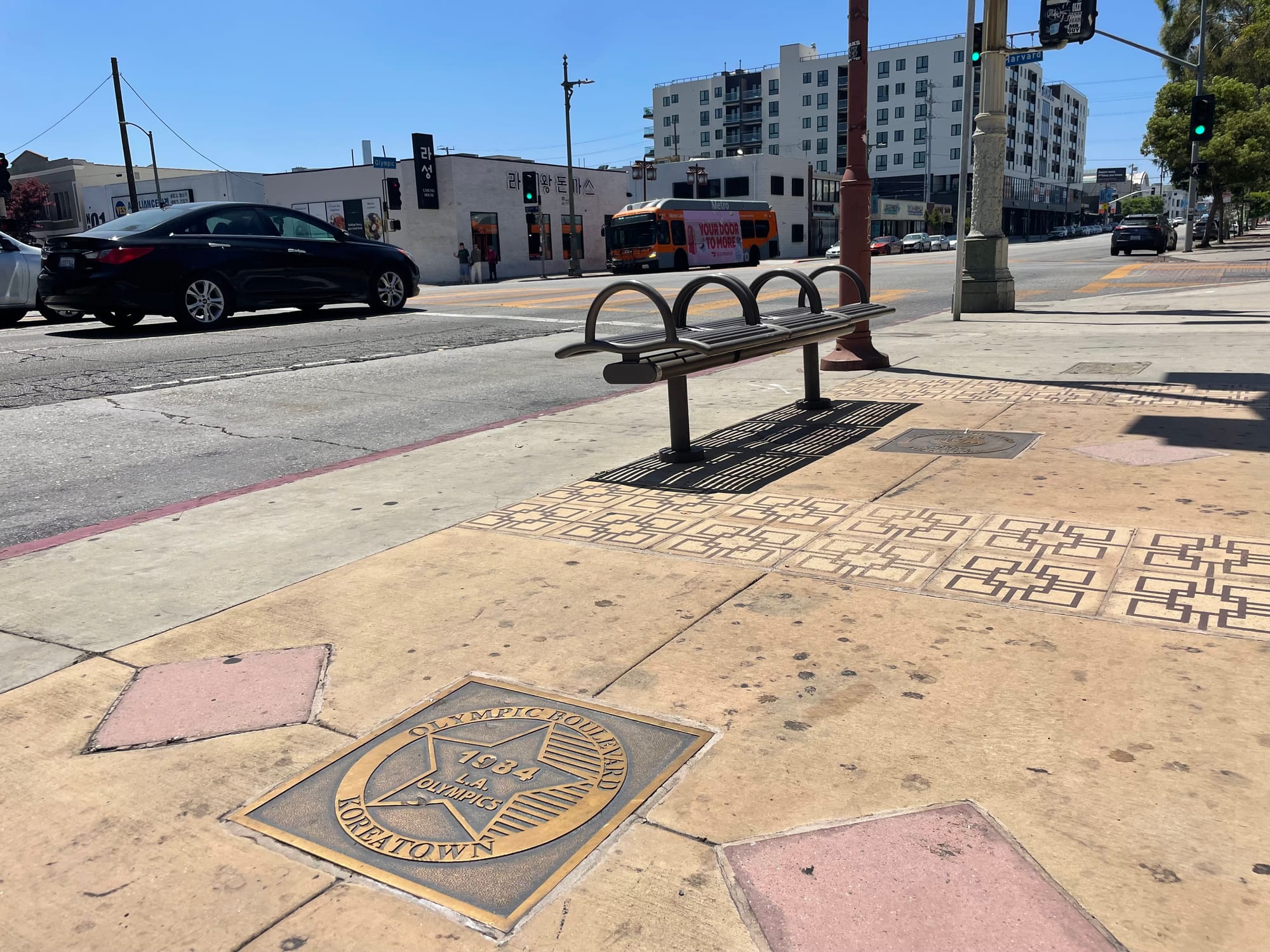
These bus stops along Olympic are framed out with decorative pavers and three bronze plaques: 1932 Olympics, 1984 Olympics, and then... the Seoul Summer Olympics in 1988. Plopped way too close to such a busy street is maybe the most hostile bench I've ever seen — you could get grill marks on three sides of your body at once. Like I've said before, I love it when I find a new legacy improvement from previous games that I didn't know existed. And this seems like one artifact from a bygone era that might need a little revamp before 2028.
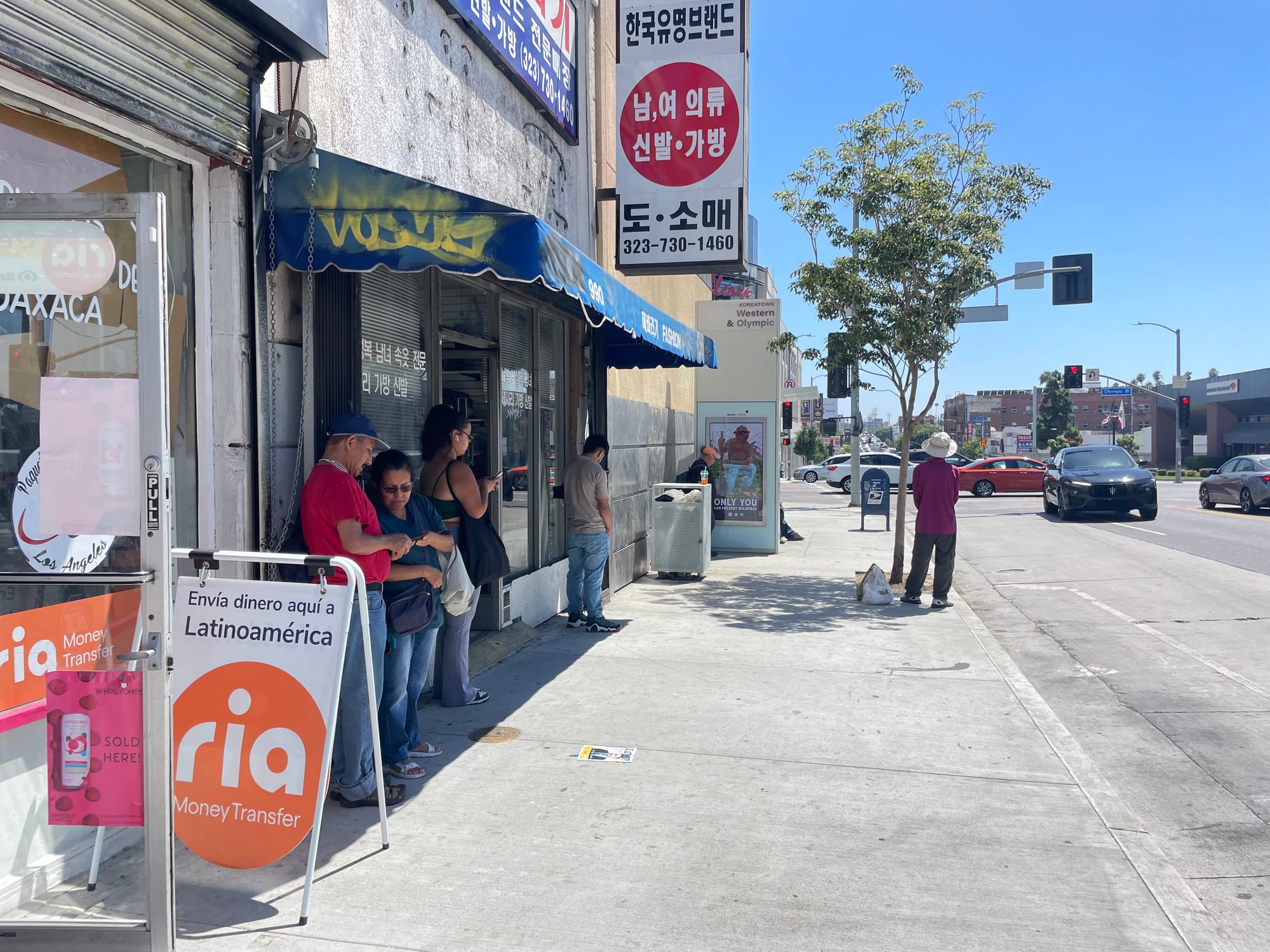
At the corner of Western and Olympic I finally came face-to-face with one of the city's brand-new bus shelters. Up close, they look very sleek. On one side there's a screen listing real-time arrivals, also with audio — some older shelters have this too — although most people now have the same information on their phones. Inside, the three seats are situated so closely together that it would be uncomfortable for three adults to sit; great for me and two kids, but otherwise more like two seats and coffee table. When I arrived, there were only two people using the shelter, and eight other passengers were huddled into whatever other shade they could find.
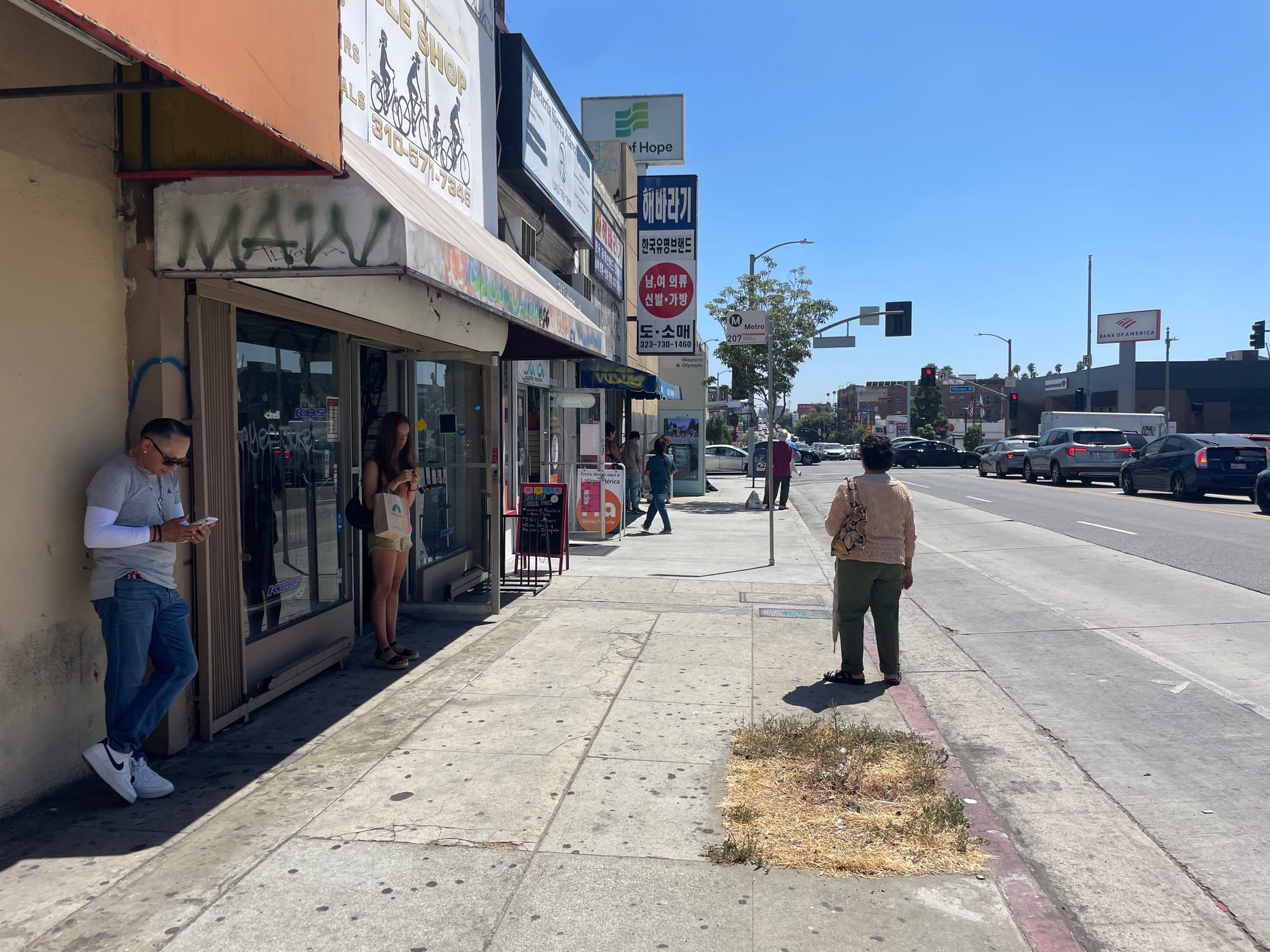
A few minutes later, I moved back a few more feet and took another photo. There were even more people than this waiting by the time the bus arrived. This wasn't rush hour. This wasn't even after school lets out. This was 2 p.m.
Yes, the old bus shelters weren't much bigger than this. But these new ones were supposedly designed for a future of hotter days and higher ridership. What are we accomplishing when we build a shelter for a busy bus corridor and it only shelters two, maybe three, passengers?
I know, the entire conversation around LA's bus shelters is that "it's too hard to install a bus shelter." But the city has effectively opted out of fixing the problem. Instead, we're spending more money to install equally insufficient bus shelters trimmed with a few more bells and whistles that don't materially improve the waiting experience. Maybe the Vermont bus rapid transit project will deliver the more appropriately scaled bus shelters found along the G (Orange) BRT line in the Valley. But this is Western! Also home to extremely high-ridership lines. These passengers deserve something much better. Our leaders must have the courage to widen a few damn sidewalks at the busiest bus stops. Or, at the very least, plant some mature trees in all those empty tree wells.
LA officials keep saying the new bus shelter program is "for the Olympics." What we're installing isn't good enough for a Thursday afternoon.
The thought of millions of people waiting for buses in 2028 has similarly perplexed Ben Lehrer, design principal at Lehrer Architects, who has been ruminating on legacy transit concepts for our "car-free" games. Lehrer envisions a modular system of kiosks that can be scaled as necessary. These "mini-monumental" hubs not only show where the buses are, they make waiting for the bus a destination in itself. And he's categorized them around many of the same amenities that riders have said they want while they're waiting: connections, snacks, and cooling.
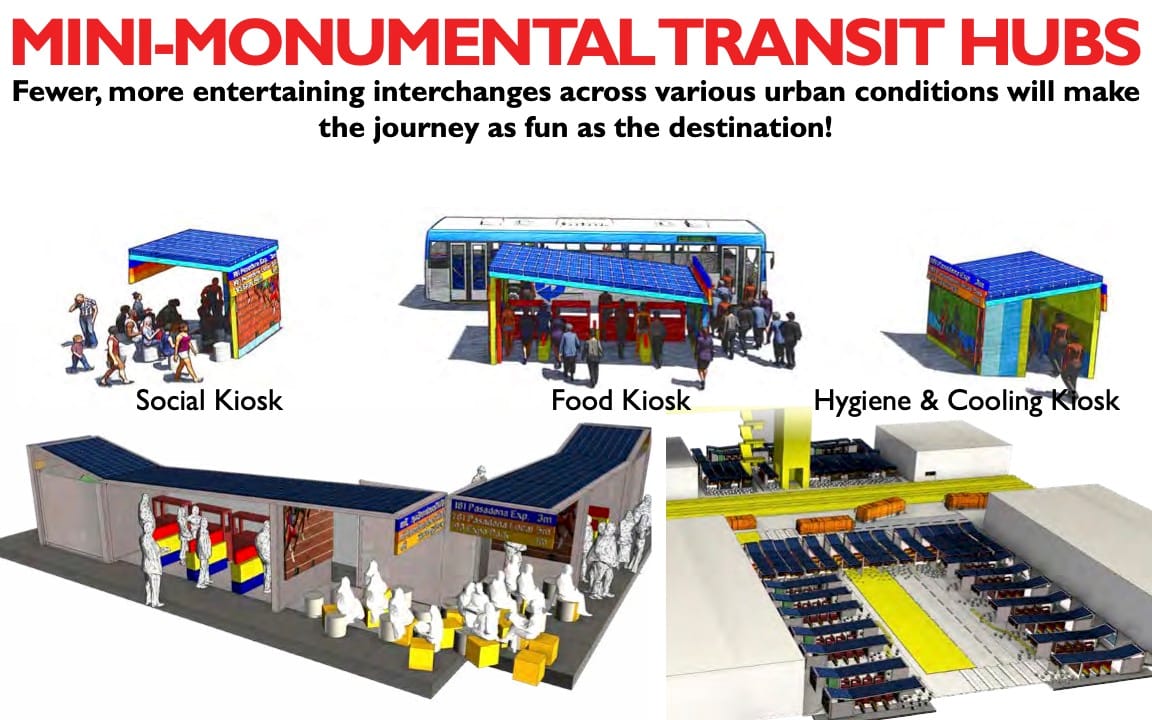
Like me, Lehrer had been surveying the shade-scapes of LA as temperatures rose, and he had noticed something that I hadn't.
"What’s the biggest artificial source of shade in LA?" he asked me.
I tried to think. A tall building? An awning?
"The modernist plane of a gas station ceiling."
Lehrer sent me a Google Street View image by way of example. Gas stations are very easy to find at most major intersections: they're brightly branded — dare I say iconic — with information clearly displayed. They're hard to miss! And atop them all is a giant square of impenetrable shade. In this image, with a tiny shelter at the curb, you can directly compare how we protect fossil fuels to how we protect bus riders. Drivers, most of whom have a car with an air conditioner, often fill their tanks in LA's best-shaded quasi-public space in a shorter time period than it takes for the bus to come.
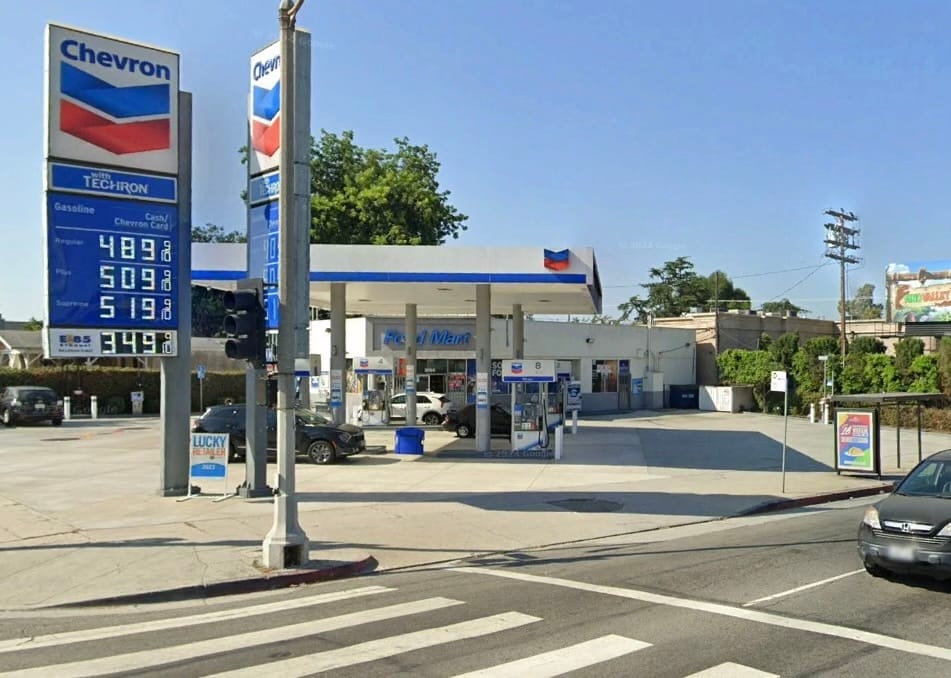
What a perfect metaphor for the situation we're in. And now, everywhere I go, I can't unsee it. 🔥